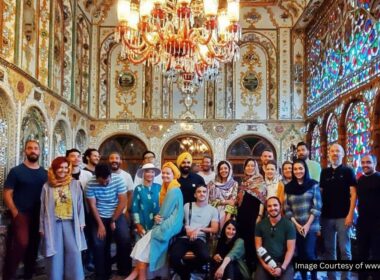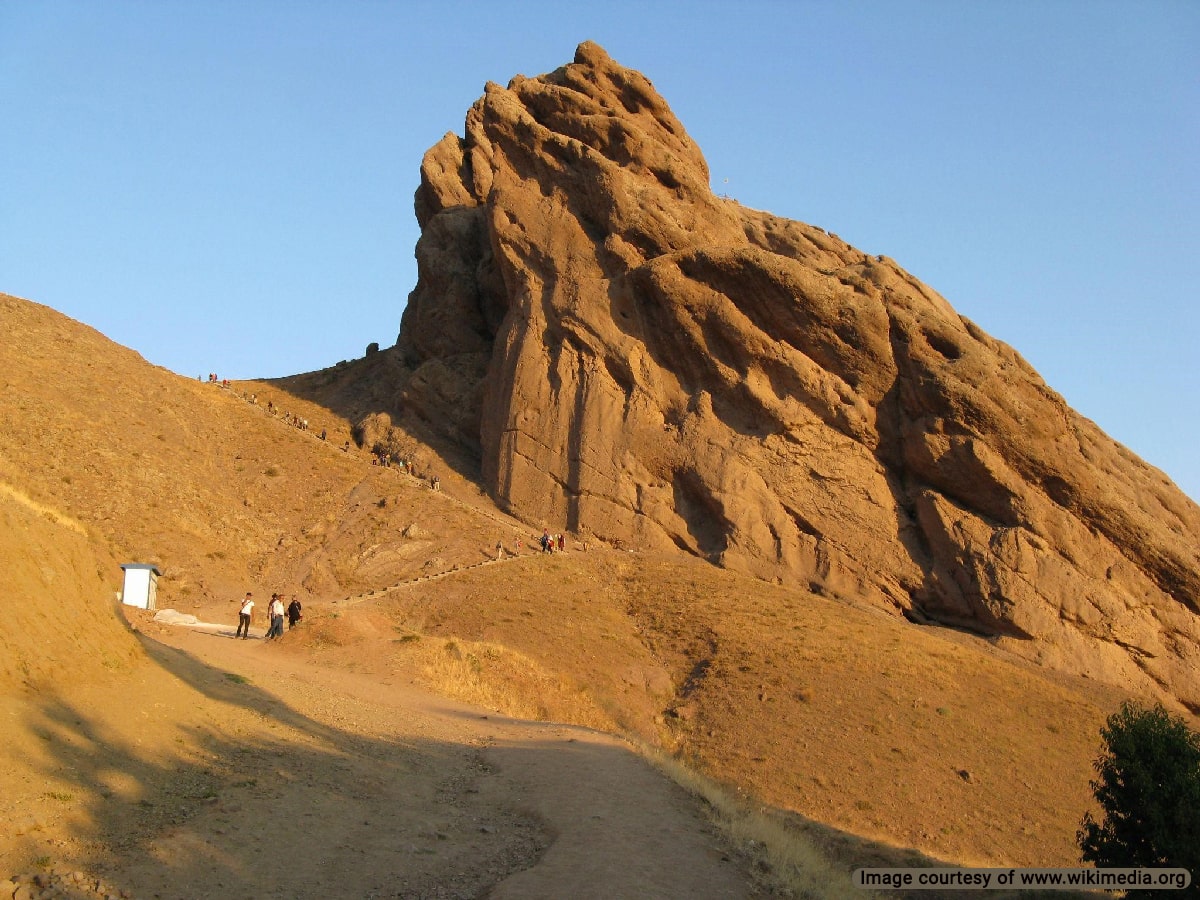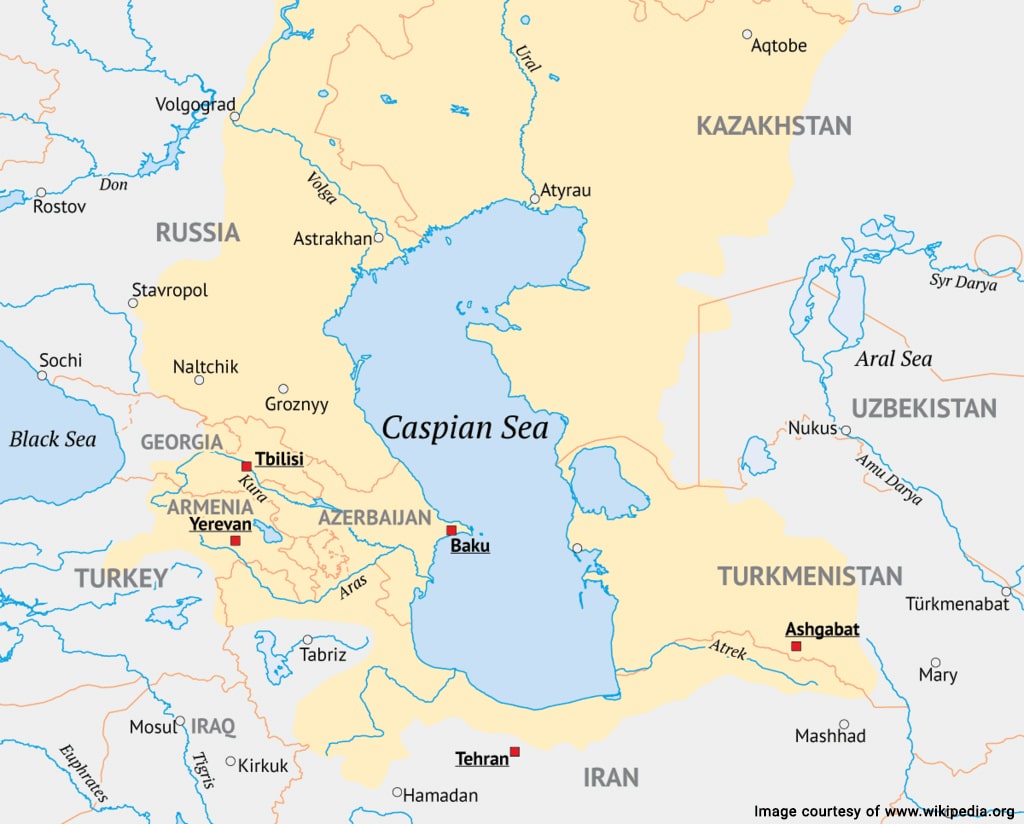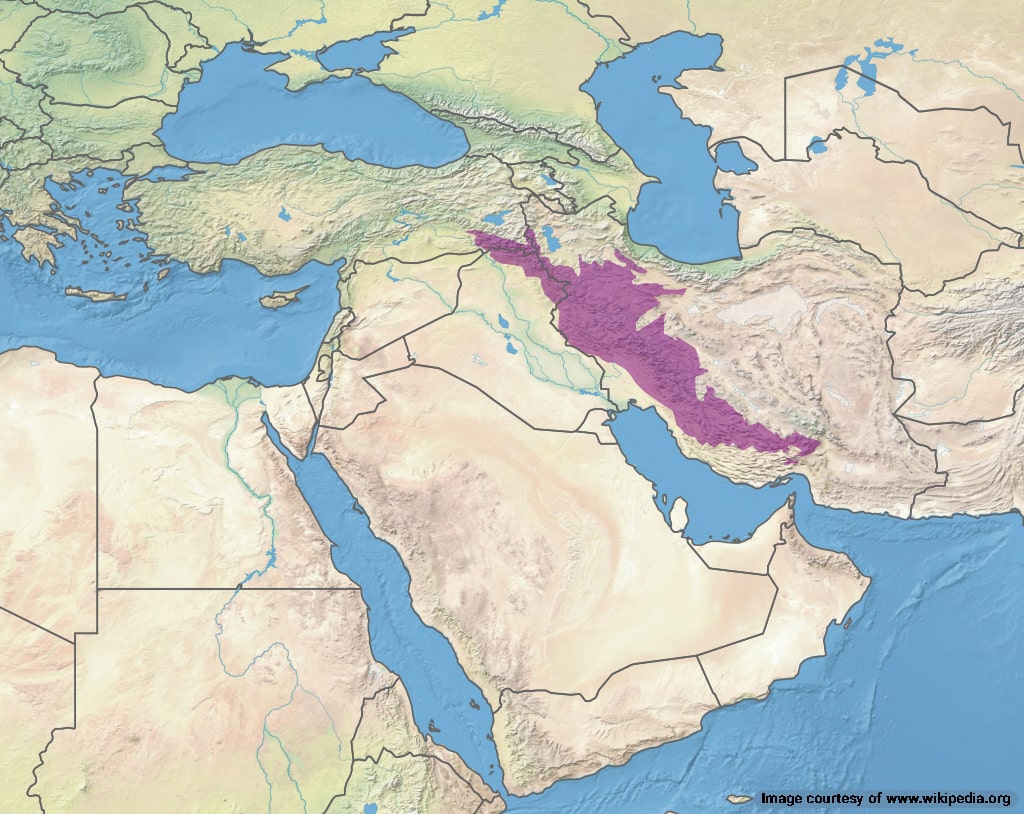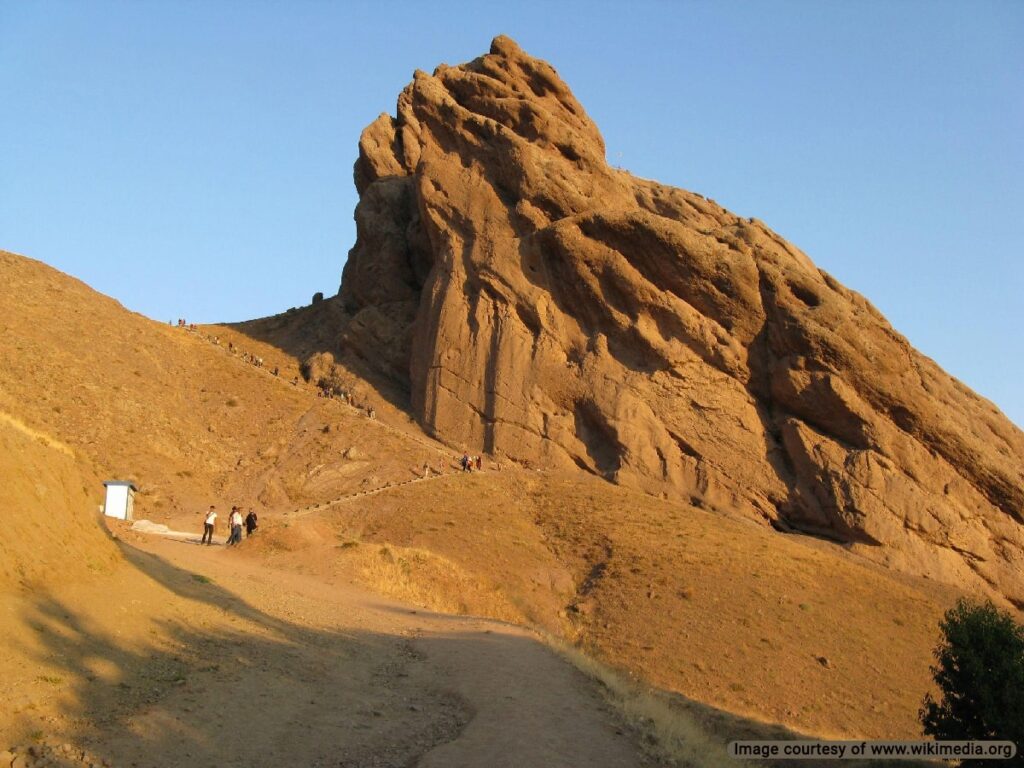
The Alamut Castle is a historical fortress in the heart of the Alborz Mountain Range in northern Iran. Some believe Alamut means the eagle’s nest in the old Tati language, but it could also mean a tame eagle. The castle is located in the Alamut region in Qazvin province, 105 km from the city. Visiting this historical castle is one of the top items on the list of things to do in Qazvin.
History of Alamut Castle Construction
This castle was built in 865 CE by Aavlid ruler Hasan ibn Zayd who founded the Zaydid dynasty. Although some sources attribute its construction to Wahsudan ibn Muhammad, a Daylamite ruler, and claim he built it in 840 CE after his pet eagle discovered the location.
It was established as a military fortress, and this location was selected because of its steep slopes and hard-to-cross terrain. Cliffs surround the castle, and the only path to access it is in the northeast, making it easy to defend.
Hassan-i Sabbah’s Capture of Alamut
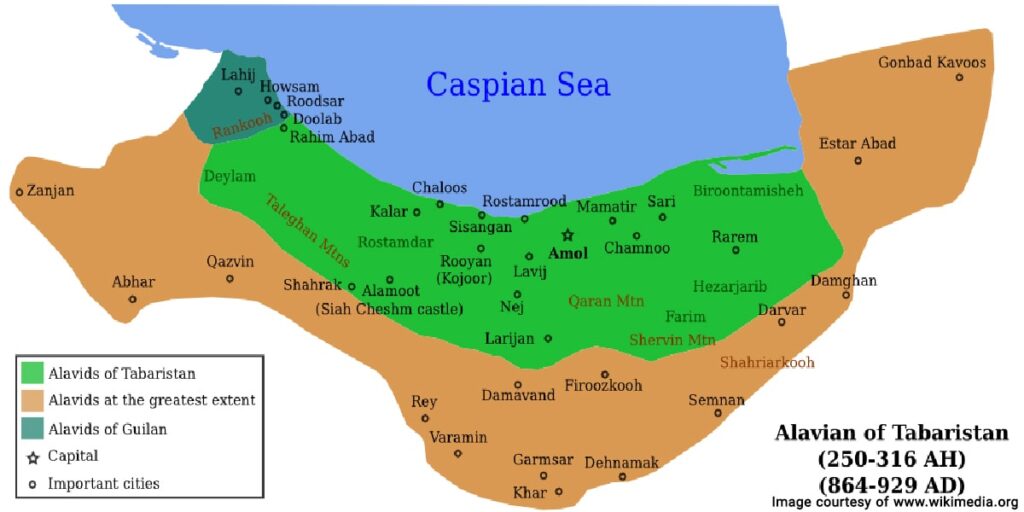
In 1090 CE, Hassan-i Sabbah, a leader of the Nizari branch of Ismaili Muslims, the second largest group of the Shia sect of Islam, acquired the castle without bloodshed. He had attracted the villagers, guards, and even the local ruler’s deputy to his cause. At this time, the Seljuks tasked the local ruler, Mahdi (an Aavlid ruler loyal to the Seljuks) to find and capture Sabbah. Once Sabbah revealed himself, Mahdi realized all his soldiers and even his deputy were loyal to him. He was allowed to leave the castle and was paid 3,000 gold dinars as compensation.
By 1092 CE, he renovated the castle and added new fortifications. He constructed food and water storage facilities to prepare the castle for a possible siege. He created a self-sustaining stronghold that could withstand long-term sieges.
Alamut Castle Architecture
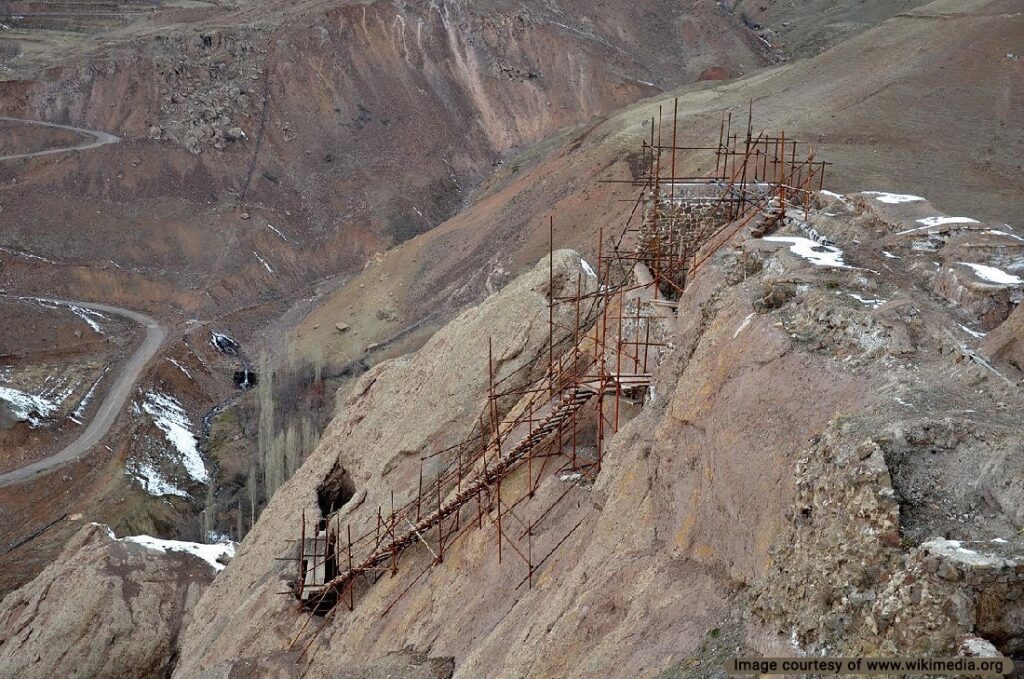
The Alamut Castle features sections built throughout its history. The materials used in the construction are stone, baked bricks, plaster, limestone, ceramic, clay pipes, and wooden frames. Most of the fortifications were built during the rule of Hassan Sabbah.
In general, the castle is divided into two west and east sections. The fortress has two castles and originally had four towers, but the west tower has been destroyed. The only visible entrance to the castle is below the west tower. There is a tunnel leading to the south-side tower.
Sabbah built hidden rooms and underground tunnels that connected the castle to hidden exits far from the perimeter wall. A deep moat was dug around the southern wall to defend against invaders. There was an open space between the two castles for training and social gatherings.
The guard rooms are built inside the cliff on the southern wall. There was a residential area in the east section for the guards and their families. It features three water reservoirs, a stable, and several rooms.
The Legacy of Hassan Sabbah

Hassan Sabbah was the founder of the Isamai’li extremist state known as Hashashin (The Order of Assassins) in the 10th century CE. He was a religious and military leader, philosopher, mathematician, and philosopher who valued science. The order believed the assassination of important figures was their best bet at weakening the Seljuks and the Baghdad Caliphate.
According to some sources, he was friends with the Seljuk minister Nizam al-Mulk and the poet Khayyam during childhood. He traveled to Cairo later in life and joined the Fatimid Caliph. His conversion to the Ismā’īlī sect of Shiaism put him at odds with the Baghdad Caliph and the Seljuk kingdom. Nizam al-Mulk ordered his capture, which led to his escape into the mountains.
He established the Alamut government, which trained and dispatched a devoted group of assassins known as Fadai’yan to the Muslim world. They assassinated 48 political figures under the orders of Hassan Sabbah, including Nizam al-Mulk.
Alamut Library
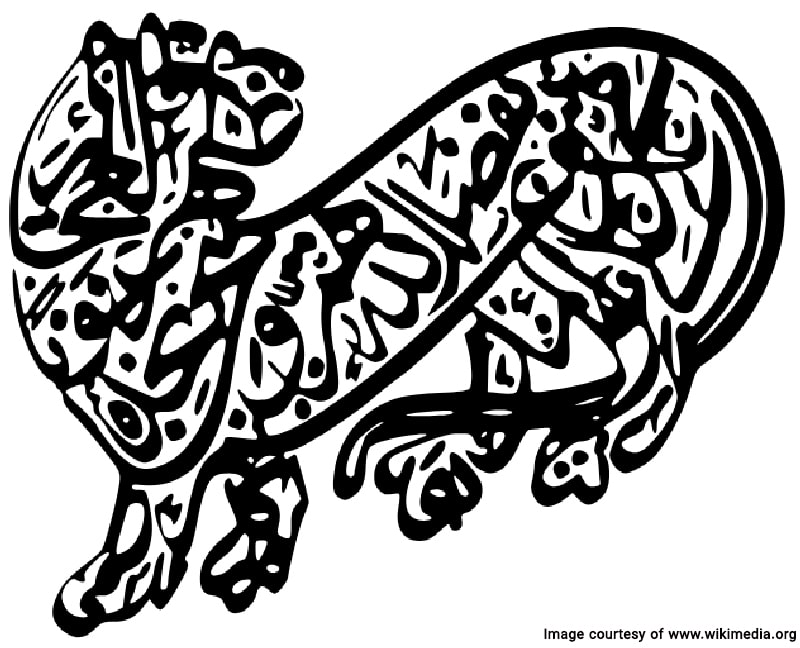
Hassan Sabbah built a library in the castle and gathered some of the rarest books in the ancient world. Unfortunately, this library and its contents were mostly destroyed during Hulegu Khan’s invasion of Alamut. According to Tarikh-i Jahangushay, a book by Ata-Malik Juvayni, the library held 400,000 volumes of the most important scientific manuscripts.
Renowned scholars such as Nasir al-Din al-Tusi spent years in the castle laboratories and recorded their findings in manuscripts stored in the library. During the Mongol invasion of the castle, Ata-Malik Juvayni pleaded with Hulegu Khan to save some of the manuscripts from destruction.
Legends of Alamut Castle
There are many legends about the Alamut in popular culture. According to some, their scholars discovered alchemical secrets that allowed them to turn other metals into gold. This rumor originated from their extensive knowledge of chemistry and famed laboratories.
It also led to the spread of another legend that there is a hidden treasure of gold and valuables underneath the castle. There are also rumors of a hidden tunnel leading to paradise, which was the reason the Fadai-yan were ready to lay down their lives for the cause.
Some sources assume this legend was based on drug-induced hallucinations of the soldiers, who were influenced and indoctrinated by Hassan Sabbah and his successors to devote themselves to the cause.
Mongol Invasion of Alamut
After Hassan Sabbah, the castle remained an Ismai’li stronghold until 1256. In that year, Hulagu Khan surrounded the fortress, and Rukn al-Din Khurshah surrendered the castle to him. The Mongols burned and demolished the castle and its extensive library, and used it as a prison in the following years. In 1257 CE, the Nizari recaptured the castle and established Ismaai’li rule. In 1282, they were again defeated and driven out by Abaqa Khan, Hulagu’s son.
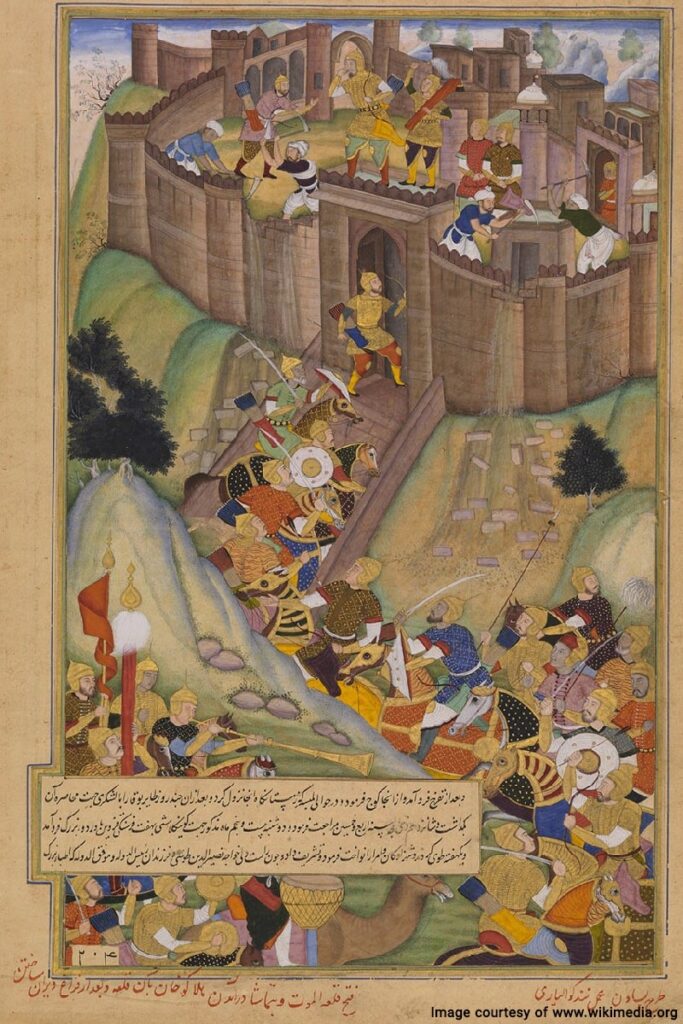
Visit Alamut Castle to Bask in Historical Mysteries
The Alamut Castle has been shrouded in a cloud of mystery because of the secretive conduct of the Ismaili group that resided there for a few centuries. Their reign of terror created many legends about this location. After the Mongol destruction of the castle, many of their secrets were burned with the original building. The castle is now in ruins, but you can still visit it and wonder about its lost mysteries.
Where is Alamut Castle?
Alamut Castle is located in the Alamut region in the Albroz mountain range in Qazvin province. You can go to this historical attraction on a tour package or by yourself. It is a three-hour drive from Tehran.
Frequently Asked Questions about Alamut Castle
If you have any other questions about Alamut Castle or related topics, please let us know in the comments. We will respond as soon as possible.
Why is Alamut Castle famous?
It was the base of operations of the infamous Hashashin (Order of Assassins), an extremist sect of Nizari Ismaili Shias in the 10th century CE. Hassan Sabbah captured this castle and created a devoted order of assassins who terrorized the Seljuk government and killed Nizam al-Mulk.
Who destroyed Alamut Castle?
The Alamut Castle was destroyed during the Mongol invasion of Khwarazmshahian territories in 1256. Hulagu Khan surrounded and burned the castle along with its famed library, and demolished large sections of the fortress.
Who was Hassan Sabbah?
Hassan Sabbah was a military and religious leader in the 10th century who founded the Nizari Ismaili sect in Iran. He was a renowned scholar who practiced math, geometry, and philosophy. He was loyal to the Fatimi caliphate in Egypt and was wanted by the Seljuks and the Abbasid Caliphate in Baghdad. He remained in Alamut until he died in 1124. During his time, he ordered the assassination of 48 political figures by his Fadai-yan order of assassins.
What was the Hashahin (Order of Assassins)?
This order was founded by Hassan Sabbah to further the objectives of Nizari Ismaili sects in the Muslim world during the early first Millennium CE. They continued to operate for 200 years even after his death. During that time, they assassinated hundreds of historical figures including Fatimid, Abbasid, and Seljuk figures and targets in Europe.



